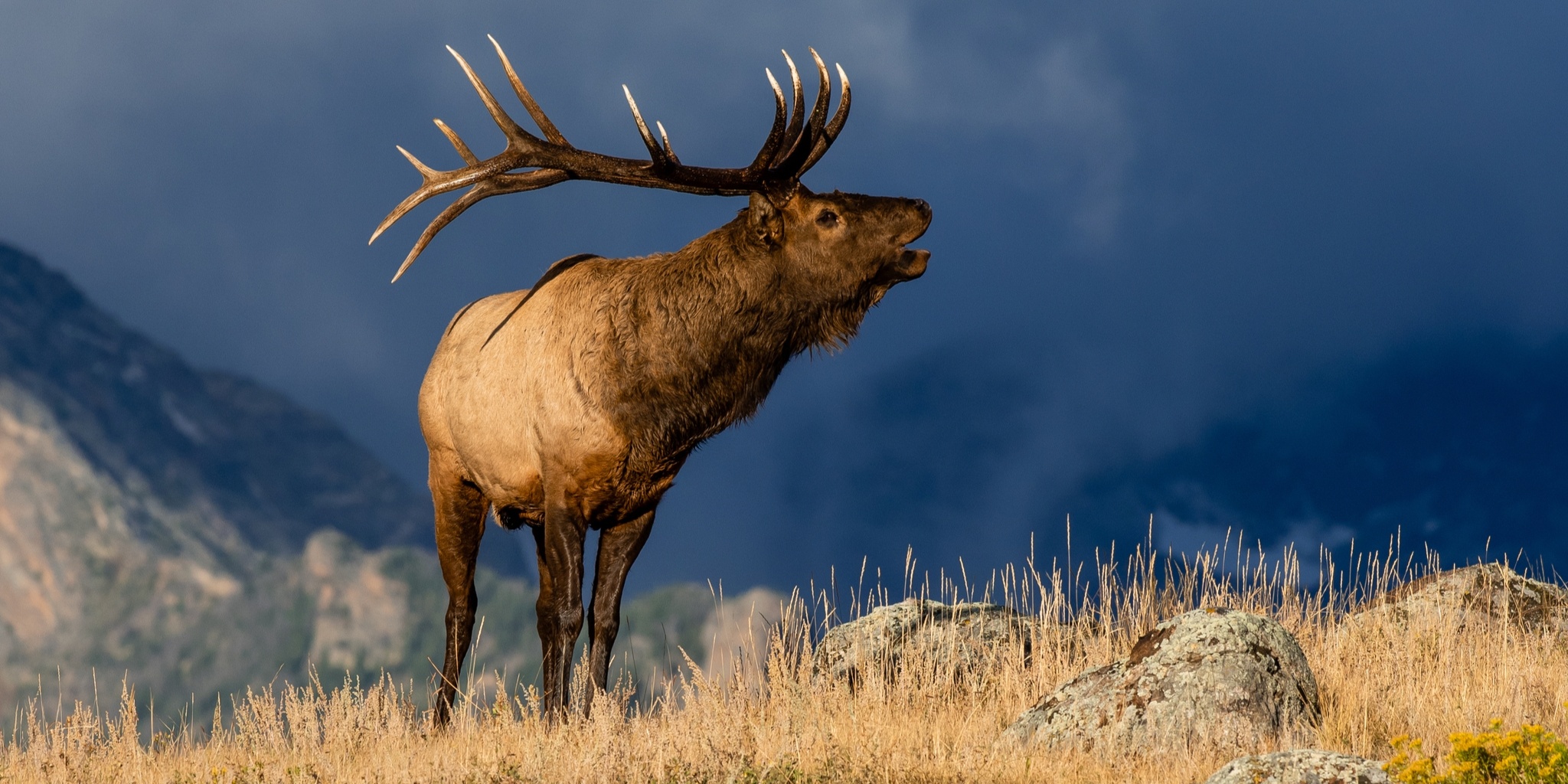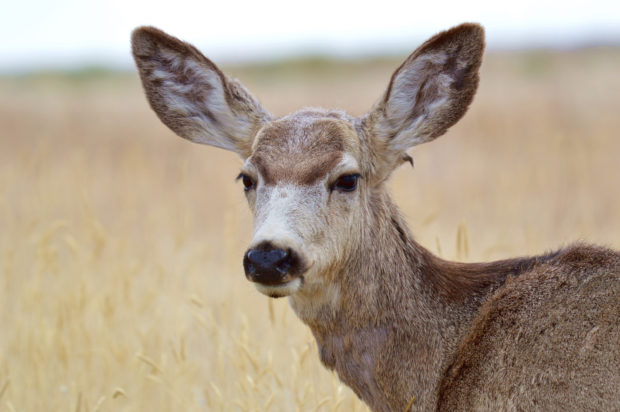We have much more to do and your continued support is needed now more than ever.
From Sacred Majesty to Sound Management

Whether it’s seeing Rocky Mountain bighorn sheep scale steep cliffs in the Carson National Forest or watching a golden eagle soar high above the Santa Fe National Forest, such sacred encounters leave us with a profound appreciation of the glory, grandeur, and magnificence of America’s wildlife. In a state known for its incredible beauty and biodiversity, New Mexico’s wildlife has much to teach us about the larger interconnected web of life.

A bighorn sheep in the Rio Grande del Norte National Monument in New Mexico. Credit: Jacob Byk / NWF
Part of the Upper Rio Grande valley ─ one of the most intact wildlife landscapes in America ─ the Santa Fe and Carson National Forests are home to amazing wildlife such as Rocky Mountain bighorn sheep, Rio Grande cutthroat trout, herds of elk, mule deer, and pronghorn, as well as a wide array of birds, reptiles, and amphibians. The region also connects a diverse tapestry of human communities which have rich histories, cultures and sacred traditions rooted in the area’s land, water and wildlife. Safeguarding the wildlife of the Upper Rio Grande is about more than protecting wildlife: it is about protecting an interconnected way of life that spans back more than 35 generations.
Conserving essential wildlife habitat and key migration routes in the Santa Fe and Carson National Forests is also a critical step in helping address the global wildlife crisis. According to the recent United Nations’ Intergovernmental Science-Policy Platform on Biodiversity and Ecosystem Services report, up to one million species worldwide are now threatened with extinction, many within decades. The current rate of species extinction is ten to hundreds of times higher than the average rate of extinction over the past 10 million years. In the United States, as many as one third of our nation’s wildlife species are vulnerable to extinction and states have identified over 12,000 species in need of conservation. Protecting critical habitat allows wildlife to flourish. Failing to allow wildlife to move on the landscape can threaten ecosystems, human communities, cultural traditions, and spiritual practices.
Officials at the Santa Fe and Carson National Forests are currently revising their forest plans that will set the management direction of each forest for decades to come. It is imperative that both forests adopt strong forest-wide prescriptions to protect critical wildlife habitat and promote wildlife connectivity. They must be encouraged to follow the best available science by continuing to include the following key wildlife management areas in their final forest plans:
The Caja del Rio Wildlife and Cultural Interpretive Area
Bordering Bandelier National Monument and connecting various western mountain ranges, the Santa Fe National Forest’s “Caja del Rio Wildlife and Cultural Interpretive Management Area” is a place of profound cultural, historical and spiritual significance. Recognized by the New Mexico Heritage Preservation Alliance as one of the state’s “most endangered places,” this management area contains thousands of significant archaeological sites as well as various Native American sacred sites. The Caja del Rio is also home to historic trails, such as the Camino Real del Tierra Adentro, the first major trade route in North America. The management area contains numerous wildlife corridors critical to the survival of various species and will help protect important wildlife habitat for elk, mule deer, black bear, and cougar as well as various birds including western burrowing owls, golden eagles and grey vireo.

The San Antonio Management Area
Located in the Carson National Forest northwest of Taos, the San Antonio Management Area is comprised of 148,000 acres of rolling grassland surrounded by conifers, ponderosa pines and aspen stands. This area connects to a critical wildlife area in Colorado and is adjacent to the Rio Grande del Norte National Monument. This region contains important migration corridors for mule deer, elk and pronghorn as they travel between New Mexico and Colorado. It is also an important area for wintering and calving elk herds.
The Valle Vidal Management Area
Located north of Taos, the Valle Vidal (“Valley of Life”) Management Area stretches over 100,000 acres of rolling grassland surrounded by conifers, bristlecone pines and aspen stands. Special management of this area will preserve important wildlife corridors, including migration routes used by elk to reach calving grounds in the area. The Valle Vidal is home to one of New Mexico’s largest elk herds and is also home to New Mexico’s state fish, the Rio Grande cutthroat trout.
Rocky Mountain bighorn sheep
In addition to protecting these three special management areas, it is also vital for the forest planners to recognize Rocky Mountain bighorn sheep as a “Species of Conservation Concern.” As one of America’s most iconic species, Rocky Mountain bighorn sheep symbolize the sheer beauty, strength and spirit of the American West. By recognizing them as a “Species of Conservation Concern,” the Carson and Santa Fe National Forests will continue to support the work of nearby Native tribes which have been working to recover this indigenous species. Historically, Rocky Mountain bighorn sheep were well distributed across the western U.S. ー numbering over a million animals. Due to habitat loss, over-hunting, and disease exposure, by the late 1800s the population of Rocky Mountain bighorn sheep drastically declined from over a million to only 45,000 sheep remaining today. Since the Carson and Santa Fe National Forests both provide essential habitat for Rocky Mountain bighorn sheep, prioritizing the management of bighorn sheep will help ensure the survival of this remarkable species.

It’s vital for anyone who has ever enjoyed hiking, fishing, bird watching, or any other outdoor recreation in the Santa Fe or Carson National Forests to speak up about these forest plans. With the proper management, the Upper Rio Grande can become a model for the nation in how to protect public lands, water, and wildlife while also supporting the culture and traditions of the neighboring communities. To comment on the Santa Fe National Forest plans, click here. To comment on the Carson National Forest plans, click here.
Santa Fe National Forest
Carson National Forest
Andrew Black is a native New Mexican and the field director for the public lands team at the National Wildlife Federation.





















